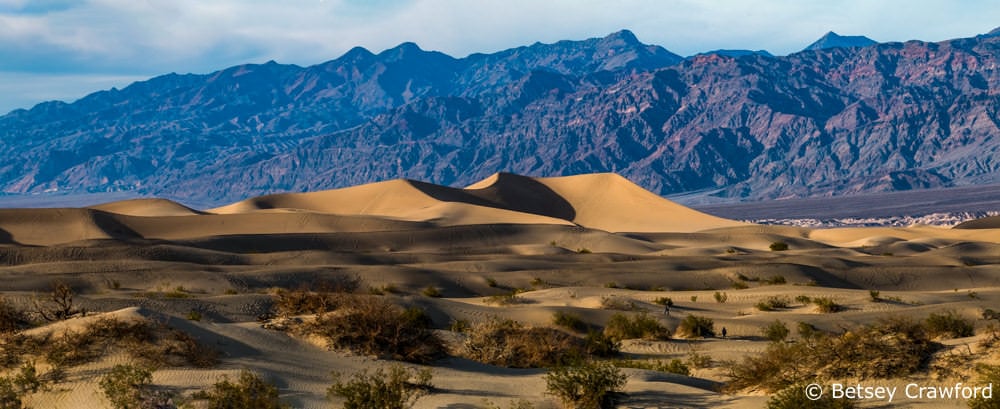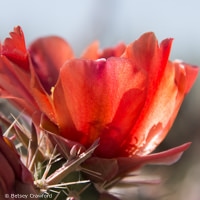 Finding beauty in a broken world is creating beauty in the world we love.
Finding beauty in a broken world is creating beauty in the world we love.
Terry Tempest Williams
I treasure finding beauty everywhere I go. And having it find me. The chocolate lily above is my favorite picture of 2018. I love both the flower itself and the spray of gold light behind it. It also comes from a May trip to Coeur d’Alene, where my son Luke lives, so that means it was blooming in a favorite place. As soon as I got there the wildflowers literally burst into flower. My nine days were a nonstop thrill, both to be with Luke and to have thousands of gorgeous flowers happening at once. They inspired a new gallery of Idaho wildflowers. My friend Sube, also a photographer, accompanied me one day so you can see me in the best place on earth: on the ground with wildflowers.

The best place on earth, luckily, is wherever I can do that. In March, my partner, George, and I went to the Anza Borrego desert, inspiring a gallery of flowers from that amazing place. I started The Soul of the Earth in the AB desert in 2015 and updated one of my early pieces on the mysterious beings we walk among when we’re there. On our rather circuitous route, we also went to Death Valley, which was a first, and met one of those mysteries on the way in.
 After Coeur d’Alene, I joined a friend in Vancouver, and we explored the stunning fjord that runs north from that city to Whistler. Then, on the way home, I stopped to hike in the Hoh rainforest on the Washington coast. There were exquisite wildflowers there, but the moss and lichen-draped trees stole the show.
After Coeur d’Alene, I joined a friend in Vancouver, and we explored the stunning fjord that runs north from that city to Whistler. Then, on the way home, I stopped to hike in the Hoh rainforest on the Washington coast. There were exquisite wildflowers there, but the moss and lichen-draped trees stole the show.
 Outside of those two 3-week bursts of traveling, all other action has been local to Greenbrae, California. It was a jumping year in this neck of the woods, especially in September, when San Francisco hosted the Global Climate Summit. But it started for me in January, when I began a Drawdown Project workshop at the Pachamama Alliance offices just over the Golden Gate Bridge. I’d known about Drawdown, a program to reverse global warming, since the book came out in 2016, and love its visionary practicality. So I was delighted. Our lively and engaged group met six times, going deeper and deeper into the 100 solutions the project proposes. At the sixth session, we presented our final projects. Mine involved this unusually orderly version of my refrigerator.
Outside of those two 3-week bursts of traveling, all other action has been local to Greenbrae, California. It was a jumping year in this neck of the woods, especially in September, when San Francisco hosted the Global Climate Summit. But it started for me in January, when I began a Drawdown Project workshop at the Pachamama Alliance offices just over the Golden Gate Bridge. I’d known about Drawdown, a program to reverse global warming, since the book came out in 2016, and love its visionary practicality. So I was delighted. Our lively and engaged group met six times, going deeper and deeper into the 100 solutions the project proposes. At the sixth session, we presented our final projects. Mine involved this unusually orderly version of my refrigerator.
 I love to make connections and realized that 36 solutions involve owning and filling a refrigerator. So that’s what I wrote about in Project Drawdown: reversing global warming. As part of my Blessed Unrest series, I also wrote about the Pachamama Alliance itself, with its literally magical beginnings and its powerful vision. They have a great approach to involvement: express enthusiasm and the next thing you know you’re part of the team. That’s how I ended up helping to teach the Drawdown workshop this past fall.
I love to make connections and realized that 36 solutions involve owning and filling a refrigerator. So that’s what I wrote about in Project Drawdown: reversing global warming. As part of my Blessed Unrest series, I also wrote about the Pachamama Alliance itself, with its literally magical beginnings and its powerful vision. They have a great approach to involvement: express enthusiasm and the next thing you know you’re part of the team. That’s how I ended up helping to teach the Drawdown workshop this past fall.
I was drawn to Pachamama because of their involvement in an issue close to my heart: the rights of nature. In 2008, they were instrumental in getting a rights of nature plank into the new Ecuadoran constitution. I attended their Global Gathering at the end of May, which left hundreds of us full of happy zeal. The same was true of the Climate Summit in September. The official events were invitation only, but there were hundreds of ancillary events, and I went to a bunch of them. Then there was the annual Bioneers Conference in October, a great way to hear and be inspired by a wide variety of activists.

In between doing all these wonderful things, my love for the plant world had me exploring the amazing process of turning light into food in Living light: the crucial miracle of photosynthesis. The surprising results of asking questions no one else thought to ask inspired Pursuing mystery: how we found out lichen has a third partner and is saving the earth.
Then, in the fall, I became transfixed by seeds. I thought it would be one essay, The brilliance of seeds, about the profound knowledge found in these tiny beings. But I ended that one by saying I’d be continuing. I wanted to explore the layers of a crucial story of our time in The toxic gamble: genetically engineered seeds. I couldn’t leave it on that harrowing note, so in Saving seeds I wrote about the people and organizations fighting to keep our 12,000-year agricultural heritage available to all.

My essay on Rights of Nature had me wondering how we change our thinking to encompass ideas about the rights of rivers, trees, ecosystems, the atmosphere. Inspired by a series of talks cosmologist Brian Swimme gave on the powers of the universe, I decided to study each of his eleven powers to see what the cosmos teaches us about proceeding into a livable and just world. I started with Radiance, which is, among other things, the power of the heart and our capacity to love. Radiance in flowers is so abundant that I created a gallery of luminous photos. My second power was Centration: the Universe and the Doughnut, looking at what we can learn about economics from the cosmos’ methods of organization. The patient genius of transmutation is up next.

On many levels, 2018 has been an incredibly difficult year for the whole planet and every being on it. The Oxford English Dictionary’s word of the year is ‘toxic.’ There was a 45% rise in the number of times it was looked up. It was a year of waking up to toxic and heartbreaking news every day. But I found immense comfort and joy in spending so much time with inspiring people, and in dwelling with the beauties of the world. To paraphrase one of those inspiring people, theologian Ilia Delio, the only way we can strip the world of goodness is by not loving it.
In loving it, we join ourselves to the forces that brought us here, the great powers that operate with such patience and care. Living and acting within those energies sustains and inspires us. They’re animating and exhilarating, flowing into us, forming us, connecting us, creating the future through us.
I wish you a new year filled with those boundless energies, bringing you beauty, joy, and the excitement of action.

I’d love to have you on the journey! If you add your email address, I’ll send you notices of new adventures.[madmimi id=178565]
Related posts:



